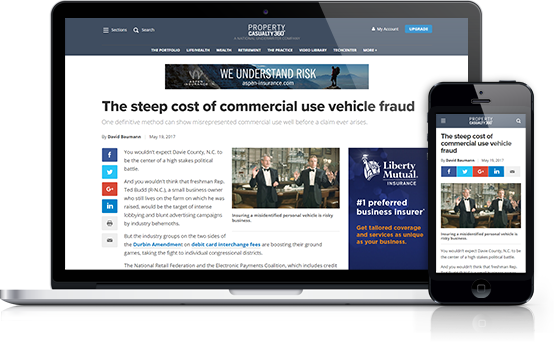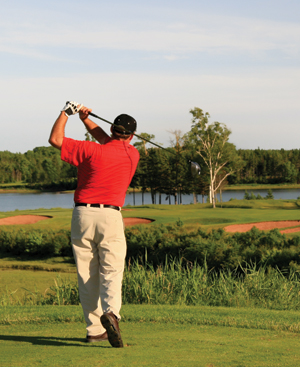Recommended Stories
Nearmap’s AI-powered models approved in 27 markets
Insurers can leverage the predictive scores to help price risk.
WalletHub: States where auto loan rates increased the most
New car buyers are in a financial squeeze.
Shifting weather patterns challenge future flood prediction
New technology juggles storm water risk, urbanization and climate change.
Resource Center

eBook
Sponsored by AgentSync
The Future of P&C Insurance: The Race to Contain Costs Amid Rising Catastrophic Losses
The P&C insurance sector is currently facing challenges. This eBook outlines the most pressing problems, the most promising solutions, and a few examples of these principles in action.

Case Study
Sponsored by CoreLogic
Revolutionizing Claims Processing: How a Leading Insurer Transformed Water Mitigation Reviews
Discover how one insurer drastically improved the efficiency of their water mitigation claim reviews, reducing costs and time while enhancing decision-making. Learn how this approach can transform your claims process, making it faster, more accurate, and less resource-intensive.

Assessment
Sponsored by AgentSync
Distribution Channel Management Assessment
Navigating today’s insurance landscape requires more than instinct. Assess the strengths and gaps in your distribution strategy with this comprehensive tool. Discover actionable insights to refine operations, enhance data quality, ensure compliance, and scale efficiently. Evaluate your current capabilities and see where you stand across five crucial areas. Start building a more resilient and agile network today.
PropertyCasualty360

Don’t miss crucial news and insights you need to make informed decisions for your P&C insurance business. Join PropertyCasualty360.com now!
- Unlimited access to PropertyCasualty360.com - your roadmap to thriving in a disrupted environment
- Access to other award-winning ALM websites including BenefitsPRO.com, ThinkAdvisor.com and Law.com
- Exclusive discounts on PropertyCasualty360, National Underwriter, Claims and ALM events

 Copyright © 2024 ALM Global, LLC. All Rights Reserved.
Copyright © 2024 ALM Global, LLC. All Rights Reserved.




 For most golfers, there’s nothing worse than a two-stroke penalty. Golf course owners face their own unique set of hazards, and many extend beyond the course: property exposure from fires and catastrophes, the ever-present threat of lawsuits, and the risks that come with operating course restaurants and clubhouses. Indeed, it may seem that the course itself is a side note to insuring the facility. “When you are insuring a golf course, you really have three or four businesses in one,” said Bill Dalton, president of Bridgepoint Insurance Group, Wayne, Pa. “There is the golf course, restaurant and banquet facilities, retail and other amenities. You need to analyze all of those exposures individually to make sure they are effectively handled.” Dalton has been focusing on the golf insurance sector for more than 10 years. He started Bridgepoint Insurance Group with golf as a key focus. Today, the agency insures nine clubs in the mid-Atlantic region, which makes up 15 percent of the agency’s insurance portfolio. AA&B spoke with several agents who specialize in golf coverage and what to look for in a golf program. Losses Wind and fire damage are two of the most common property claims. According to Travelers’ 2006 “Safety on the Fairway” study, destruction from windstorms makes up 23 percent of total claim costs. Branches damage the greens, and the golf manager can control some of the damage by trimming dead limbs from trees and cleaning debris as soon as bad weather subsides. After wind, fire causes the most destruction at golf facilities, even though the actual number of claims filed is small (see Table 1). The most common cause of fire is from electrical deficiencies, usually in the golf cart storage area. Restaurant operations also play a role in fires. Other weather-related losses have large impacts on outdoor facilities, and these include hail, lightning and water damage. Catastrophe exposures can be the most severe: The West Coast has earthquakes, the Midwest has tornadoes, and the Southeast has floods. Golf clubs often incur frequent workers’ compensation claims and historically these claims increase during difficult economic times, Dalton said.
For most golfers, there’s nothing worse than a two-stroke penalty. Golf course owners face their own unique set of hazards, and many extend beyond the course: property exposure from fires and catastrophes, the ever-present threat of lawsuits, and the risks that come with operating course restaurants and clubhouses. Indeed, it may seem that the course itself is a side note to insuring the facility. “When you are insuring a golf course, you really have three or four businesses in one,” said Bill Dalton, president of Bridgepoint Insurance Group, Wayne, Pa. “There is the golf course, restaurant and banquet facilities, retail and other amenities. You need to analyze all of those exposures individually to make sure they are effectively handled.” Dalton has been focusing on the golf insurance sector for more than 10 years. He started Bridgepoint Insurance Group with golf as a key focus. Today, the agency insures nine clubs in the mid-Atlantic region, which makes up 15 percent of the agency’s insurance portfolio. AA&B spoke with several agents who specialize in golf coverage and what to look for in a golf program. Losses Wind and fire damage are two of the most common property claims. According to Travelers’ 2006 “Safety on the Fairway” study, destruction from windstorms makes up 23 percent of total claim costs. Branches damage the greens, and the golf manager can control some of the damage by trimming dead limbs from trees and cleaning debris as soon as bad weather subsides. After wind, fire causes the most destruction at golf facilities, even though the actual number of claims filed is small (see Table 1). The most common cause of fire is from electrical deficiencies, usually in the golf cart storage area. Restaurant operations also play a role in fires. Other weather-related losses have large impacts on outdoor facilities, and these include hail, lightning and water damage. Catastrophe exposures can be the most severe: The West Coast has earthquakes, the Midwest has tornadoes, and the Southeast has floods. Golf clubs often incur frequent workers’ compensation claims and historically these claims increase during difficult economic times, Dalton said.





